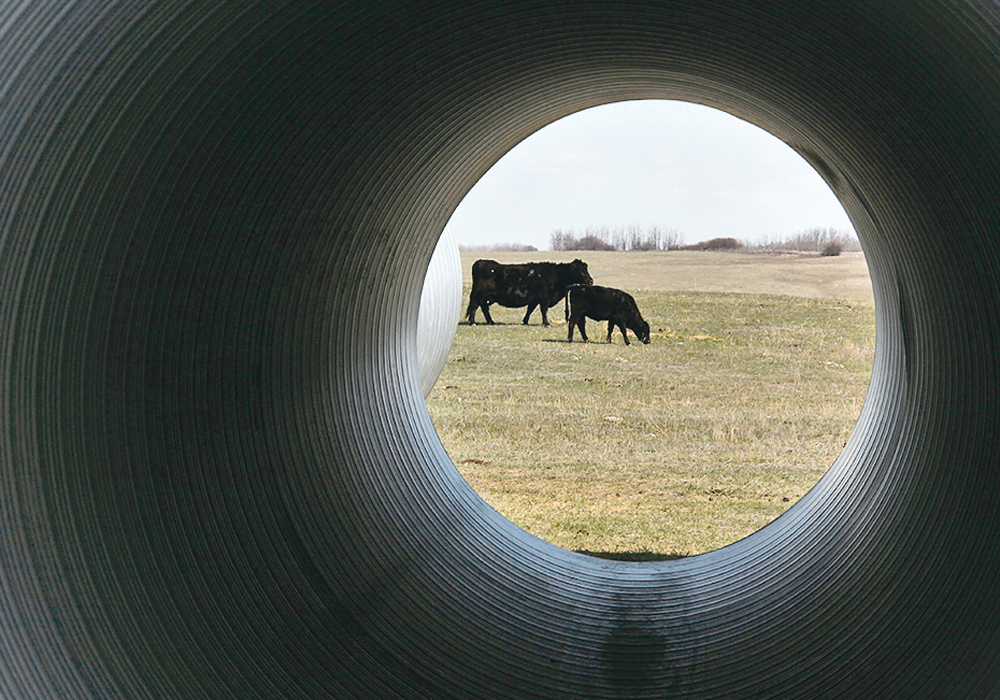Canada and the U.S. require prescriptions for antibiotics for food-producing animals and are stepping up surveillance
LEXINGTON, Kentucky — Modern livestock producers have no memory of life without antibiotics, but less than a century ago treatments for diarrhea in chicks could have been a concoction of nutmeg, ginger and iron.
“When we talk about a world without antibiotics we have to realize that has existed, and we may not be that far away from that in the future if we are not careful,” said Brian Lubbers, director of clinical microbiology at Kansas State Veterinary Diagnostic Laboratory.
In Canada and the United States, federal rules require prescriptions for antibiotics for food-producing animals, as well as stepped up surveillance and records on usage.
Read Also

Beef check-off collection system aligns across the country
A single and aligned check-off collection system based on where producers live makes the system equal said Chad Ross, Saskatchewan Cattle Association chair.
There was a slight drop in antimicrobial use in the U.S. after the government directive in 2017.
“However beef still consumes a significant portion of human medically important antimicrobials used in the United States. We still have some things we can improve on in my opinion,” he said at the international Alltech conference held in Lexington from May 19-21.
In December 2018, the U.S. Food and Drug Administration released a document on antimicrobial use looking ahead for the next five years.
The FDA wanted to address some of the remaining over-the-counter products that are still available and provide more producer and veterinary education about the principles of stewardship.
Its last goal is expanding surveillance for actual antimicrobial use on farms and possible resistance data.
“In the United States we really have no national surveillance program that looks at antimicrobial resistance for pathogens that are important to veterinary species,” said Lubbers.
Salmonella, campylobacter, E. coli and enterococcus are examined under a national program but it does not look fully at how resistance is moving through the food chain.
More diligence in antimicrobial use may be accelerated because of new policies from some restaurants that want suppliers to reduce the use of antibiotics.
Part of the move toward change is the growing problem of antimicrobial resistance.
Lubbers’ laboratory is monitoring Mannheimia haemolytica, a major cause of bovine respiratory disease and potential resistance to various drugs that could affect therapies. In 2008, all products available killed about 45 percent of the pathogens but most recently they found isolates that were resistant to six different products.
“Today over half the isolates we culture in my lab will be resistant to five or six of the antibiotics that we test,” he said.
Ceftiofur still works on M. haemolytica, but there are some reports of resistance showing up in the laboratory and some surveillance studies.
Antimicrobial stewardship is encouraged in human and animal medicine to improve treatment results.
“What we are trying to do is make sure as a prescriber, whether it is veterinary or human, that in the future I have access to effective antimicrobials,” Lubbers said.
There are challenges faced by those trying to be responsible. In the veterinary community, there is a broad range of species, diseases and production systems. A framework that can be tailored to specific operations is needed because every production system is different. Further, better treatment records are needed.
Another challenge is the behaviour of antimicrobial prescribing among physicians and veterinarians.
A U.S. study on a network of pediatric clinics treating upper respiratory tract infections in children found physicians prescribed less when they received a report card of their practice behaviour.
However once the report card was done, they started prescribing more again, partly because of pressure from parents with sick children who wanted immediate help.
There are similar pressures on veterinarians, said Lubbers.
Practitioners want to be responsible but it is difficult to define antimicrobial stewardship.
In beef production it needs to be defined to an audit standard because customers demand that. They want assurances the right drug was used on the right patient at the right time for the right duration following the right diagnosis.
Future innovations to improve the animals’ immune systems would be helpful.
This includes a combination of:
- better husbandry, housing and biosecurity
- improved nutrition
- natural host resistance to diseases
- microbiome manipulation for competitive exclusion
- better diagnostics so the right product is used for treatment


















